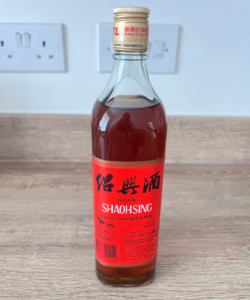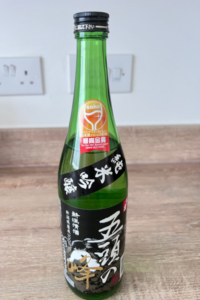In Asian cuisine, rice wine plays an indispensable role. It is not just as a beverage, but also as a magical seasoning in cooking. From the cooking wines in Taiwanese home kitchens to the sake used in Japanese restaurants, the application of rice wine varies greatly, making it a treasure trove of flavour in the kitchen.

Taiwanese rice wine
Taiwanese rice wine is primarily made from glutinous rice, fermented naturally before being distilled. It can be categorised into different parts during the distillation process. They are respectively rice wine heads, rice wine bodies, and rice wine tails. Rice wine heads are known for their high alcohol part. Due to the high alcohol concentration, only a small amount is needed for cooking to remove unwanted smells of food ingredients and enhance the food’s freshness and aroma. The middle part of the distillation, known as the heart, offers a smoother taste. However, the tail part, due to their mixed flavours, are generally not recommended for cooking. Taiwanese rice wine has a sweet taste and lower alcohol content, making it suitable for cooking to enhance flavor and make ingredients more delicious.
Chinese rice wine
In mainland China, Shaoxing wine is among the most well-known types of rice wine. Shaoxing wine is a type of yellow wine. It differs from Taiwanese rice wine in its brewing method. Other examples of yellow wines include “Huadiao” and “Nu’er Hong”. Huadiao is a premium Shaoxing wine with a deep amber color and a richer, sweeter taste. Yellow wine has a higher alcohol content and a rich taste, suitable for adding to dishes to enhance their flavour. It is widely used in cooking, from braised dishes to soups and noodles, improving the taste of ingredients. Yellow wine can also remove the beany taste of legumes, making bean sprouts more flavourful.

Japanese sake
Sake, also known as Japanese rice wine, is brewed from water, rice, and koji (rice malt). The alcohol content of sake averages around 14%. There are many types of sake, including Daiginjo, Ginjo, and Junmai, each with its unique flavour and taste. The differences in sake largely come from the choice of ingredients and the degree of rice polishing, where the outer layer containing proteins and fats is removed. A lower number indicates more polishing, generally meaning higher quality and a sweeter, more mellow taste. The acidity level of sake can indicate its richness or lightness. In Japanese cuisine, sake is not only a delightful beverage but also an essential seasoning. Cooking with sake can enhance the delicacy of the food, adding a subtle fragrance while removing unwanted odors.

Adding a bit of rice wine into cooking can, through the heat, cause a Maillard reaction in the sugars present in the wine. It not only enhances the aroma and colour of the dish but also enriches its overall flavour layers. The carbonyl compounds in rice wine can effectively reduce the acid content in the vegetable tissues when added to green leafy vegetables. It can keep the vegetables, such as spinach, pea shoots, and Chinese broccoli, bright green because it can reduce chlorophyll loss. It can maintain a vibrant green colour longer.
Rice wine can enhance the umami and help to remove any unpleasant taste, such as grassy tastes and frozen tastes. Understanding the types and characteristics of rice wine can make us more adept in the kitchen, creating an array of delicious dishes.






